Key Points
- Embrace agile structures like the Spotify model to foster collaboration and innovation
- Shift from static SOPs to dynamic runbooks for adapting to the evolving digital landscape
- Adopt platform-based approaches for scalability, flexibility, and cost-effectiveness
- Transition from being a service provider to becoming a true partner, sharing risks and driving mutual success
- Leverage a DOM to navigate digital disruption, fuel innovation, and deliver exceptional customer experiences
What do the names Hilton, Ford, Hertz, and Macy’s mean to you?
For many, these are well-established brands. They symbolize a legacy that has stood the test of time.
But in the ever-evolving digital landscape, a new set of names has emerged—Airbnb, Tesla, Uber, and Amazon. These disruptors have challenged the status quo and embraced technology to reshape their industry. In other words, they have created a new legacy, capturing the market with their innovative approaches and transforming how we travel, shop, and experience the world.
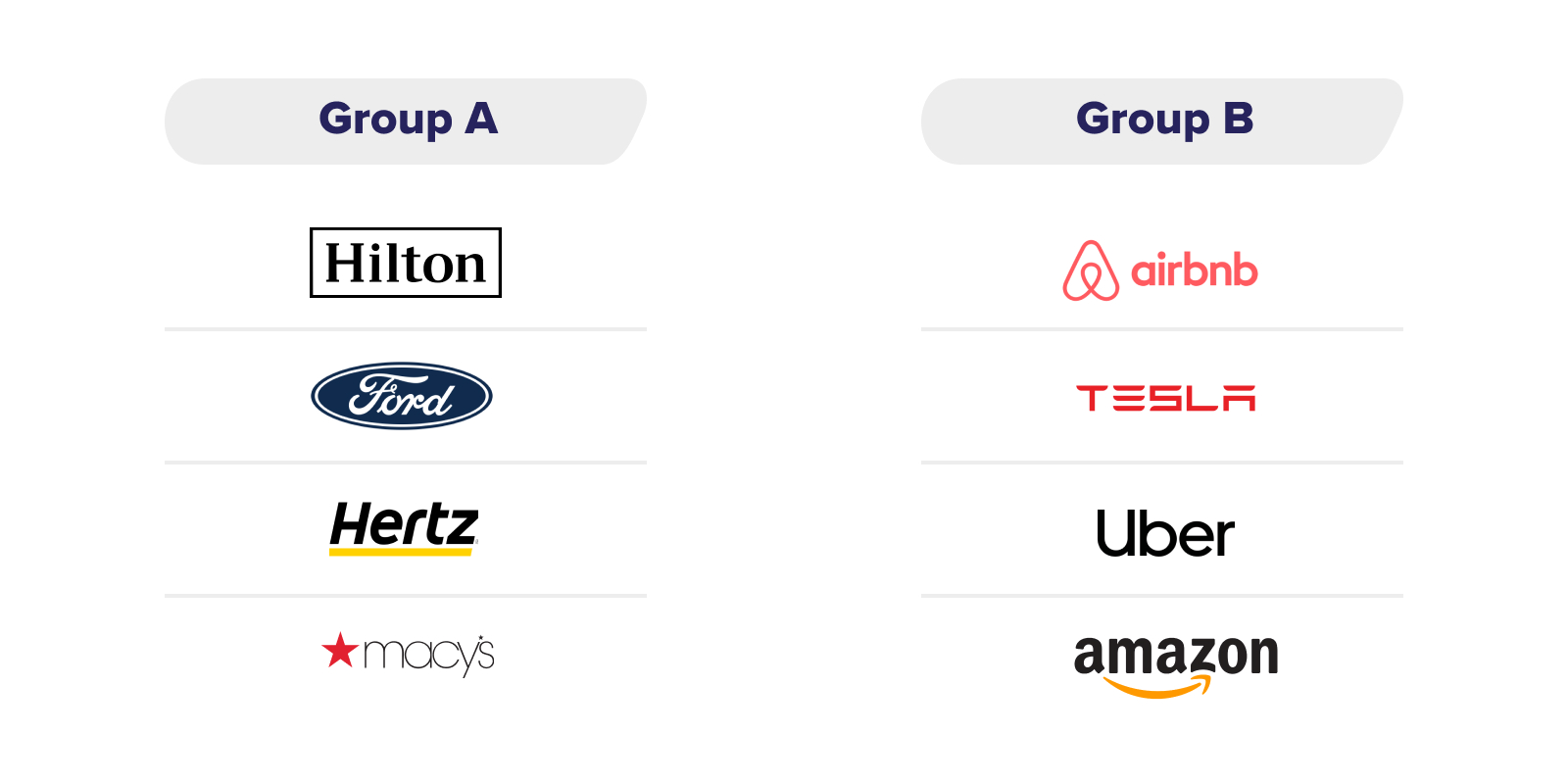
When we compare these groups, they reveal a striking contrast between the traditional and the cutting-edge, and between what we know and what pushes boundaries. It’s this contrast that captures the dynamic nature of the business world and the relentless pursuit of digital transformation.
And there’s much to learn from today’s digital disruptors and how they operate for your business to become part of the new legacy. So, think of this article as a roadmap that unlocks the true potential of your digital journey. We will delve into the key pillars of a Digital Operating Model (DOM) and explore strategies to integrate them seamlessly into your business.
Understanding the Digital Operating Model
A DOM is a blueprint that guides organizations in their digital transformation journey. It outlines how different operational aspects of the business, people, processes, platforms, and partnerships, should come together, effectively leveraging digital technologies to achieve business outcomes.
Thus, a DOM brings together two essential viewpoints: the business viewpoint and the IT viewpoint.
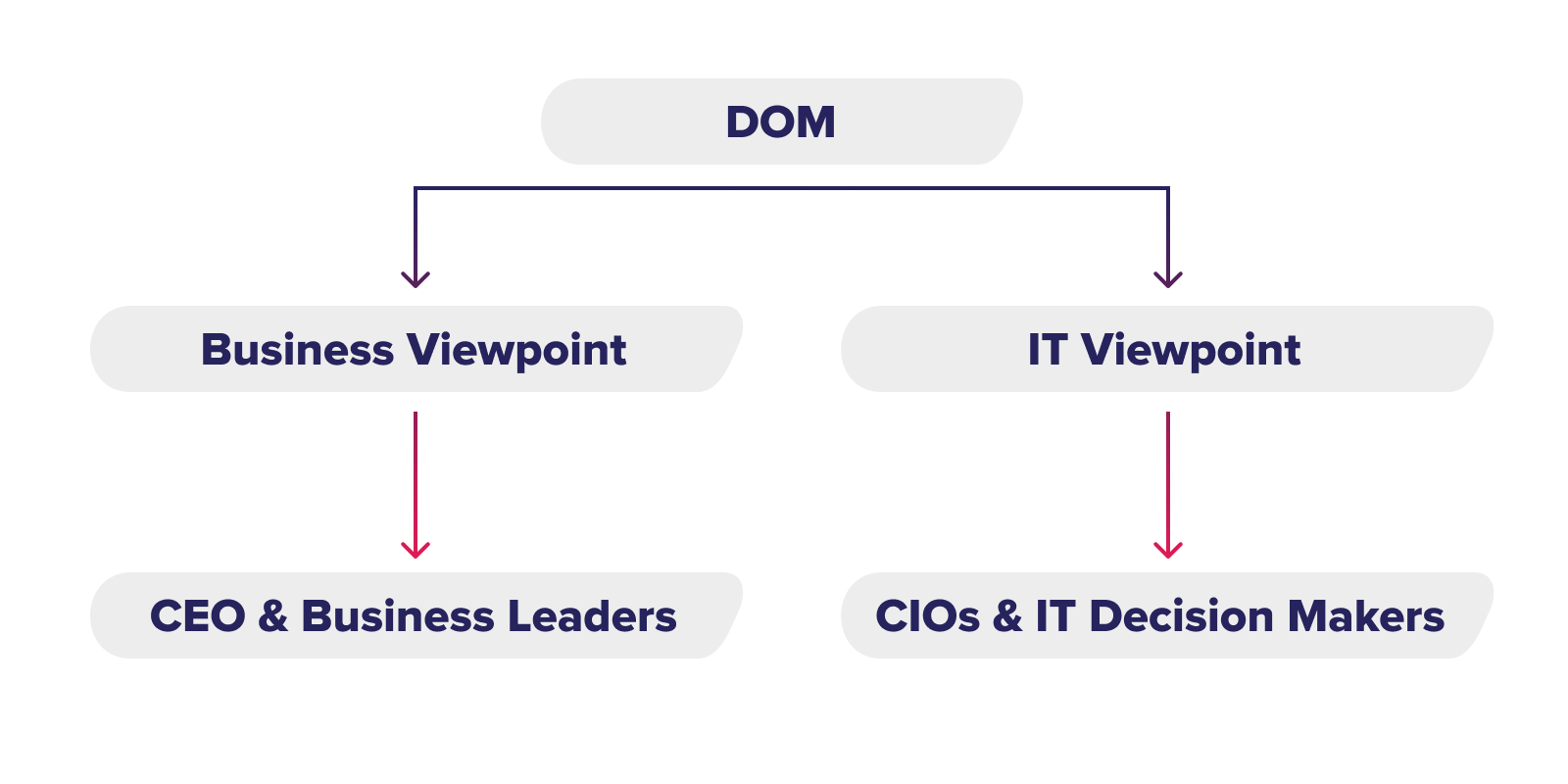
- From a business viewpoint, a DOM presents a strategic roadmap for CEOs and business leaders to adapt to digital disruption, curate a best-in-class customer experience, explore new revenue streams, and foster a culture of innovation and collaboration.
- From an IT viewpoint, a DOM is a blueprint for CIOs and IT decision-makers. It outlines how they can leverage technology to support the organization’s strategic objectives and drive operational efficiency. For example, building robust IT architectures, applying agile development methodologies, and implementing scalable digital platforms.
These business and IT viewpoints are interconnected and mutually reinforcing. For a DOM to succeed, business leaders and CIOs must collaborate closely to ensure that it aligns with both the organization’s strategic goals and technological capabilities.
Today, let’s look more at the IT Viewpoint of the DOM.
The IT Viewpoint of the Digital Operating Model: Leveraging the 4 “P”s
You’ll recognize the four “P”s we just outlined above — People, Process, Platform, and Partners. This is the foundation of a DOM, and we’ll explore all four from an IT standpoint.
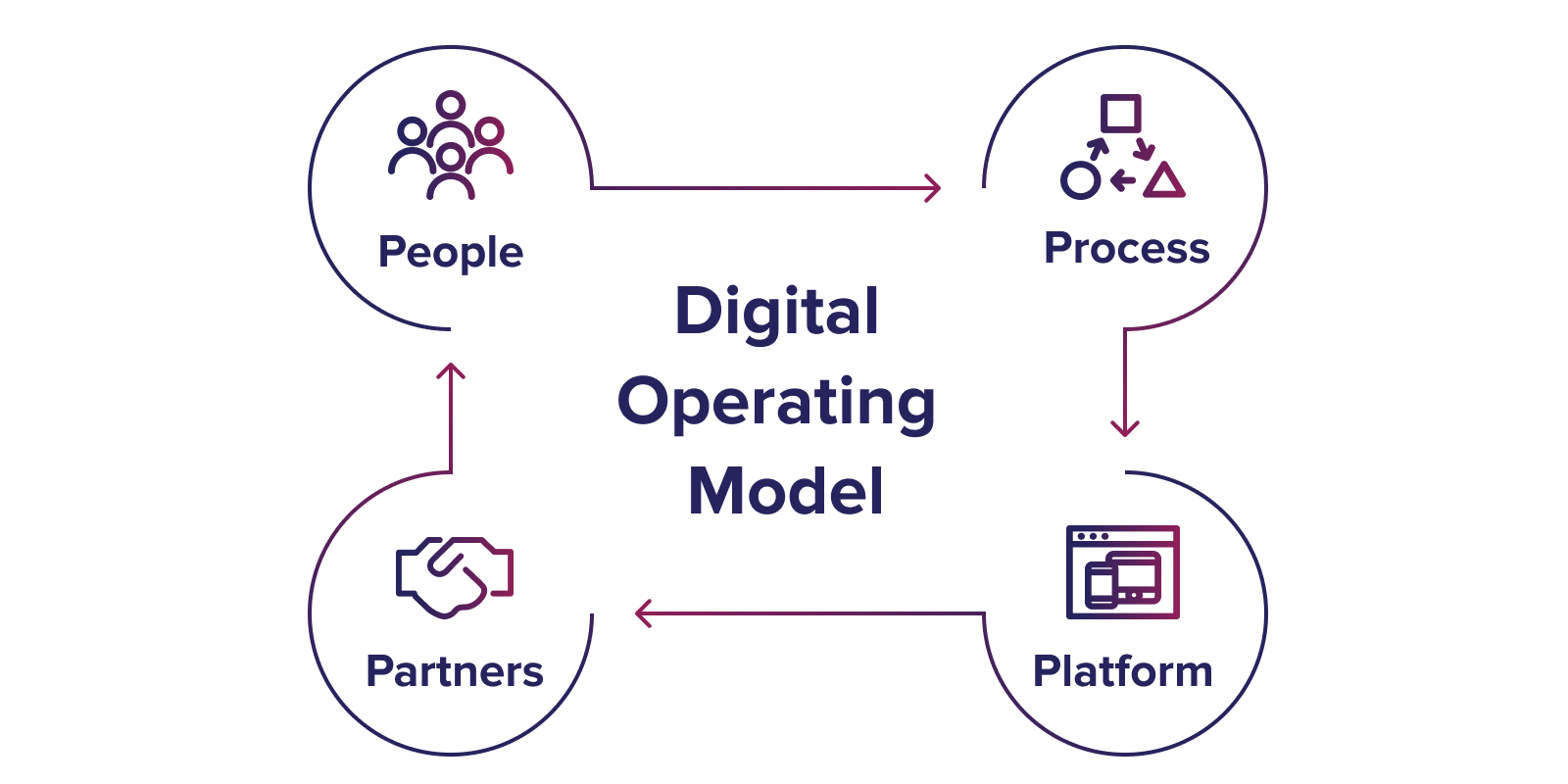
1. People
The first “P”, “People”, signifies a shift from traditional hierarchical structures to a more agile and collaborative organizational framework. It’s the foundation of the innovative human thinking needed to support an organization-wide, ongoing digital transformation.
Spotify, for example, is a digital disruptor that’s changing the legacy in this regard. But how do they do it differently?
Traditional Hierarchy
The traditional hierarchy, as we know it, is a top-down structure with concentrated decision-making power. In other words, it operates like a pyramid. The problem is that this limits collaboration, which means adaptation to change is slower, and decisions often require multiple layers of approval.
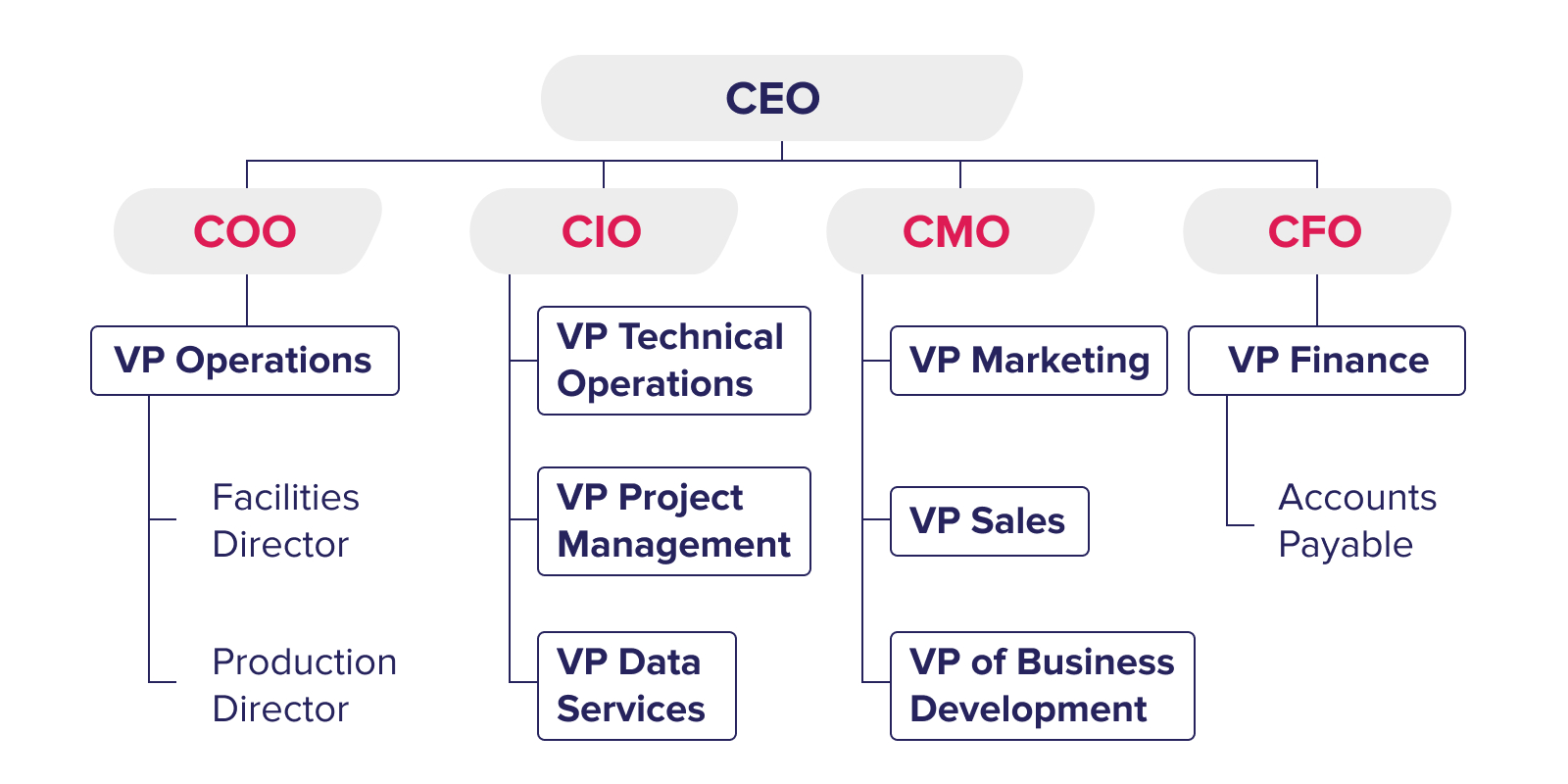
The Spotify Model
Spotify enables agile collaboration and decision-making by replacing traditional rigid hierarchies with self-contained teams, nicknamed “tribes” and “squads”.
To avoid the risk of siloes, they have groups called “chapters” and “guilds” that foster cross-functional collaboration and knowledge-sharing.
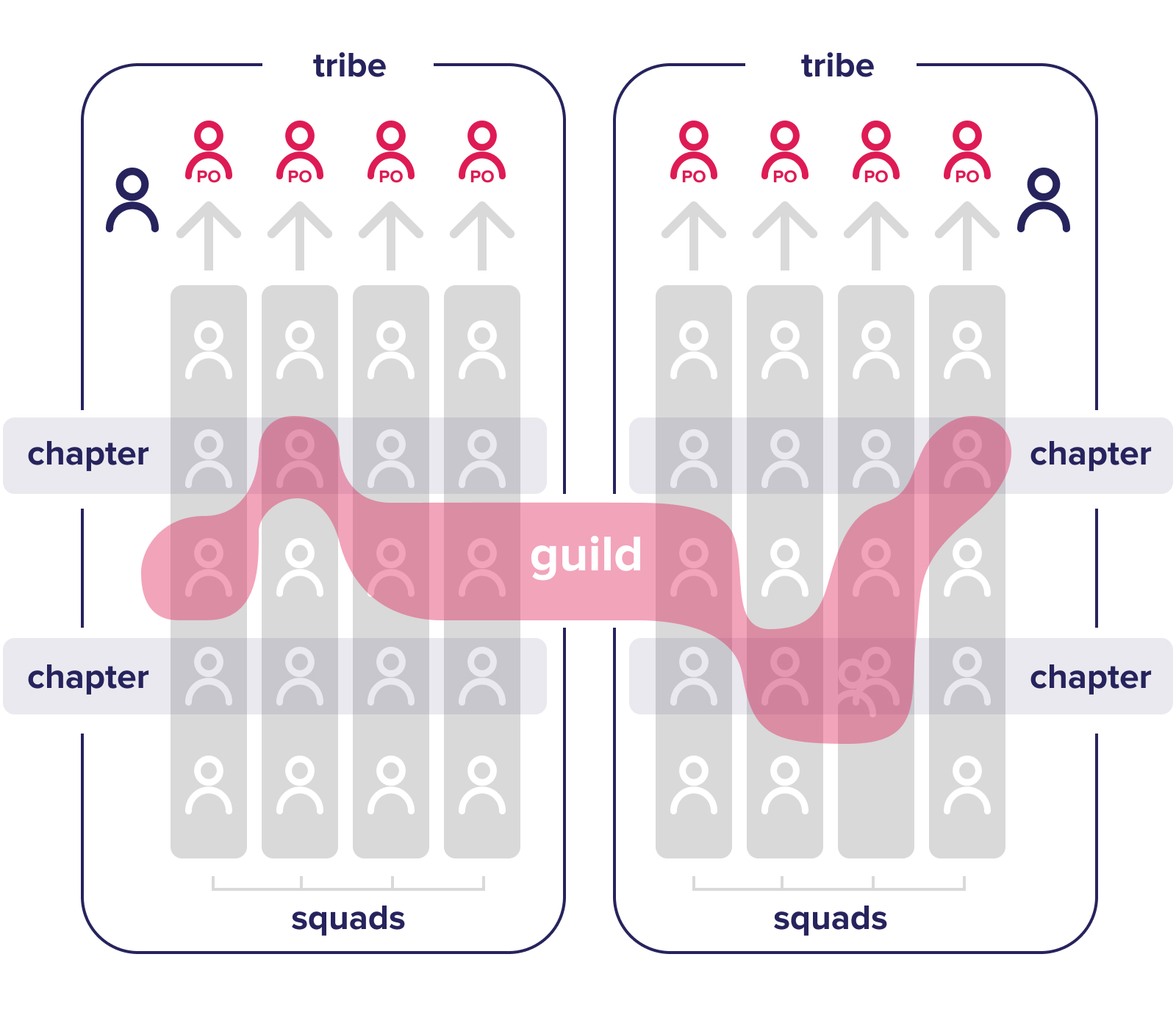
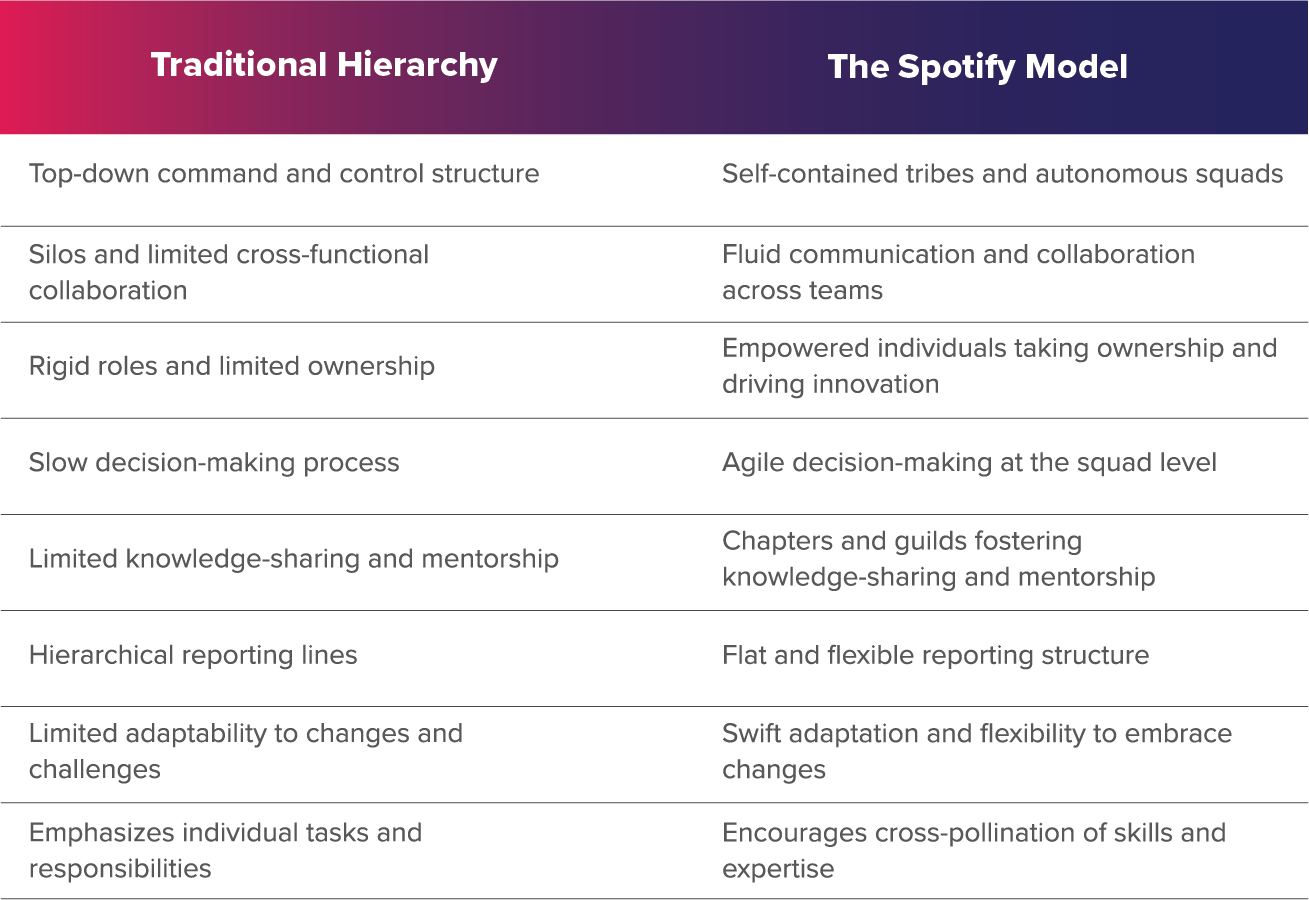
In short, the Spotify Model differentiates itself from the traditional by encouraging collaboration, balanced with individual autonomy and cross-functional interaction. This enables faster decision-making and, in turn, a more agile response to business challenges.
It’s a significant transformation to implement, yet it can potentially make a big change across your business. But where to start?
Steps To Integrate the Spotify Model Into Your Business
- Cross-Functional Tribes: Create self-contained teams (tribes) with diverse skill sets and clear focus areas.
- Agile Squads: Divide each tribe into smaller squads that can work autonomously and make decisions independently.
- Collaborative Chapters and Guilds: Encourage knowledge sharing and collaboration by establishing communities of practice where individuals with similar skills or interests can come together.
- Agile Practices: Implement agile productivity methodologies, such as Scrum or Kanban, to promote iterative development, frequent feedback, and continuous improvement.
- Effective Communication: Emphasize open and transparent communication channels to facilitate information flow and collaboration within and across teams.
- Encourage Experimentation: Create a culture that encourages experimentation, risk-taking, and innovation, allowing teams to explore new ideas and solutions.
- Continuous Learning: Invest in training and development programs to enhance the skills and capabilities of your teams.
2. Process
Our second “P”, “Process”, is interesting to navigate as business processes are typically guided by Standard Operating Procedures (SOPs) to ensure success.
But you know how sometimes businesses say they’re adapting to new technologies and changes, but they’re really just repackaging their old ways of doing things? It’s like putting old wine in a new bottle.
Well, that’s what happens when you stick to SOPs in today’s dynamic digital landscape.
SOPs are like those traditional rulebooks that provide step-by-step instructions on how to get things done. They are static and inflexible, designed for stable environments with minimal changes. But here’s the thing: the digital world is anything but stable. It’s a swirling world of constant updates and innovations.
So, replace rulebooks with “runbooks”, the dynamic and adaptable counterparts to SOPs. By providing real-time guidance for handling different operational scenarios, runbooks are your agile companions that keep up with the ever-changing digital landscape.
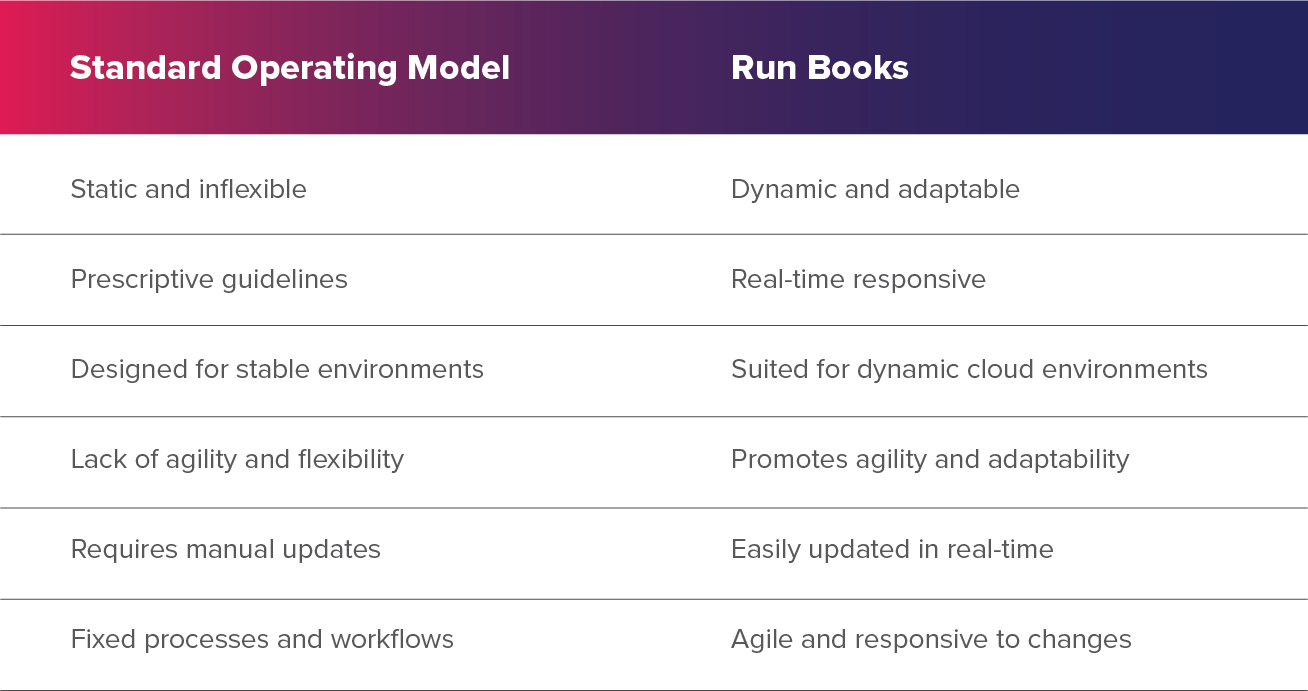
A DOM recognizes that relying solely on SOPs is not a sustainable approach. Unlike SOPs, runbooks don’t gather dust on a shelf. They can be easily updated in real-time, ensuring you always have the most relevant information.
Streamlining Processes With Runbooks
Here are a few actionable strategies for integrating runbooks seamlessly into your business:
- Identify critical processes that can benefit from runbooks
- Develop standardized runbook templates for consistency and clarity
- Train employees in runbook usage and update processes regularly
- Implement automation tools to streamline runbook execution
- Foster a culture of continuous improvement by gathering feedback and optimizing runbooks over time
3. Platforms
Our third “P” is a shapeshifter. Previously, it has meant “Product”. Yet for a DOM to succeed today, it means “Platforms”.
Why? Because platforms go beyond being standalone software solutions and instead provide comprehensive ecosystems that integrate various tools and services into your business operations. This is why the DOM embraces the concept of platforms over products, recognizing the transformative potential they bring to organizations.
Let’s break it down in simpler terms: when we talk about products, we’re looking at traditional software solutions that you buy and own. It’s your responsibility to maintain and upgrade them, and those upfront costs can really add up.
But platforms? They work on a subscription-based model, where you pay as you go. The vendors take care of the maintenance and upgrades so you can focus on what matters most to your business. Let’s take a closer look at how platforms differ from products:
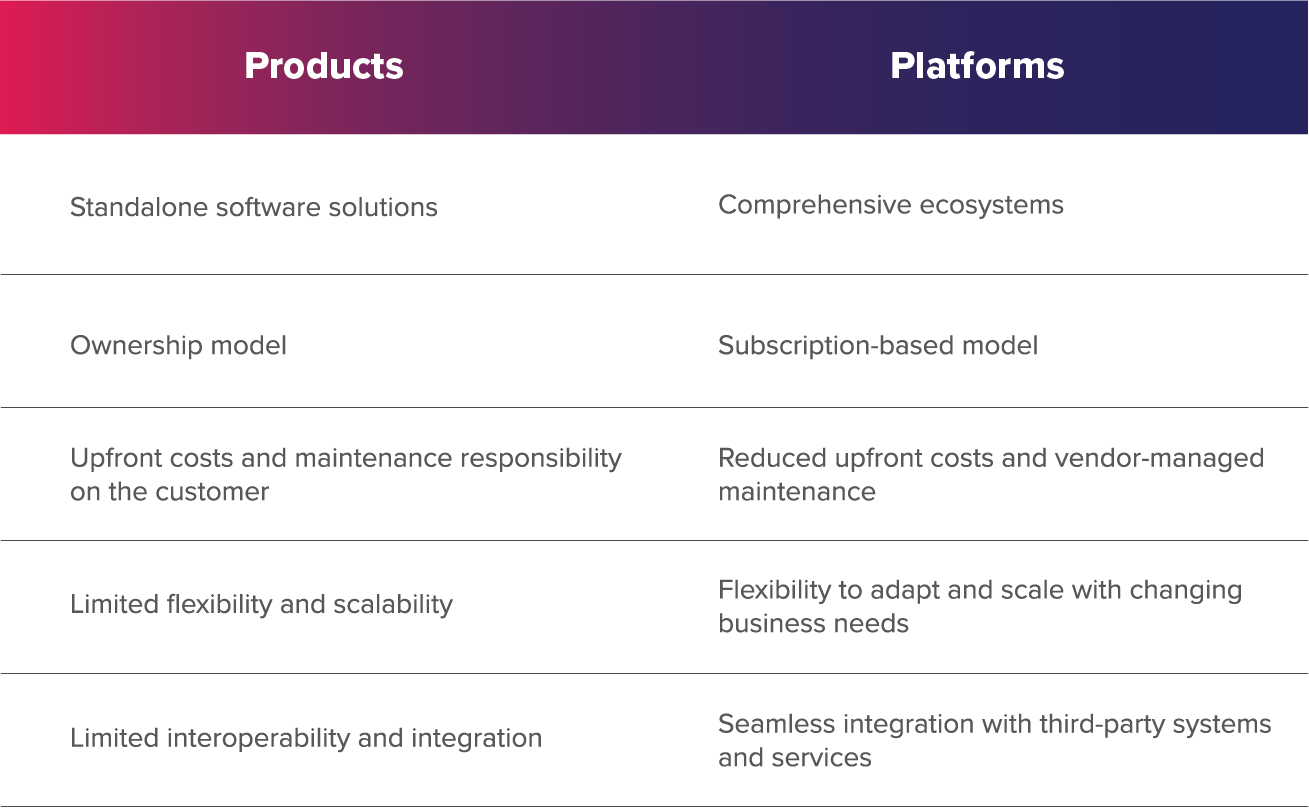
Steps to Transition From Product to Platform
- Evaluate your current product offerings and identify opportunities for “platformization”
- Define a clear platform vision and strategy aligned with your business goals
- Identify the core capabilities and functionalities required for your platform<
- Develop an ecosystem mindset and foster partnerships with complementary service providers
- Embrace a modular approach and design your platform with flexibility and scalability in mind
- Implement robust APIs and integration frameworks to enable seamless connectivity with external systems
- Continuously repeat and enhance your platform based on user feedback and market dynamics
4. Partners
The final “P” also has a new look – where once it was “providers”, now it’s “partners”.
When it comes to a Digital Operating Model, one key aspect that sets it apart is the shift from your business being a service provider to becoming a partner.
Imagine you’re an IT service provider. Your customer comes to you with their requirements, and you deliver accordingly. However, at the end of the day, the customer takes on the risk and accountability of defining what they want and investing in the solution. It’s a one-sided relationship with limited shared responsibility.
Now, let’s shift gears to becoming a true partner. In this model, the dynamics change. Much of the accountability shifts from the customer to the service provider partner. At the same time, so does brainstorming and collaboration.
With a DOM taking you from a provider to a partner, you take the lead, driving innovation and bringing your expertise to the table. You are invested in your customers’ success and work with them to co-create solutions tailored to their unique needs. It’s a relationship built on trust, collaboration, and shared outcomes.
Here’s a simplified version of the differences between service providers and partners in the context of a DOM:
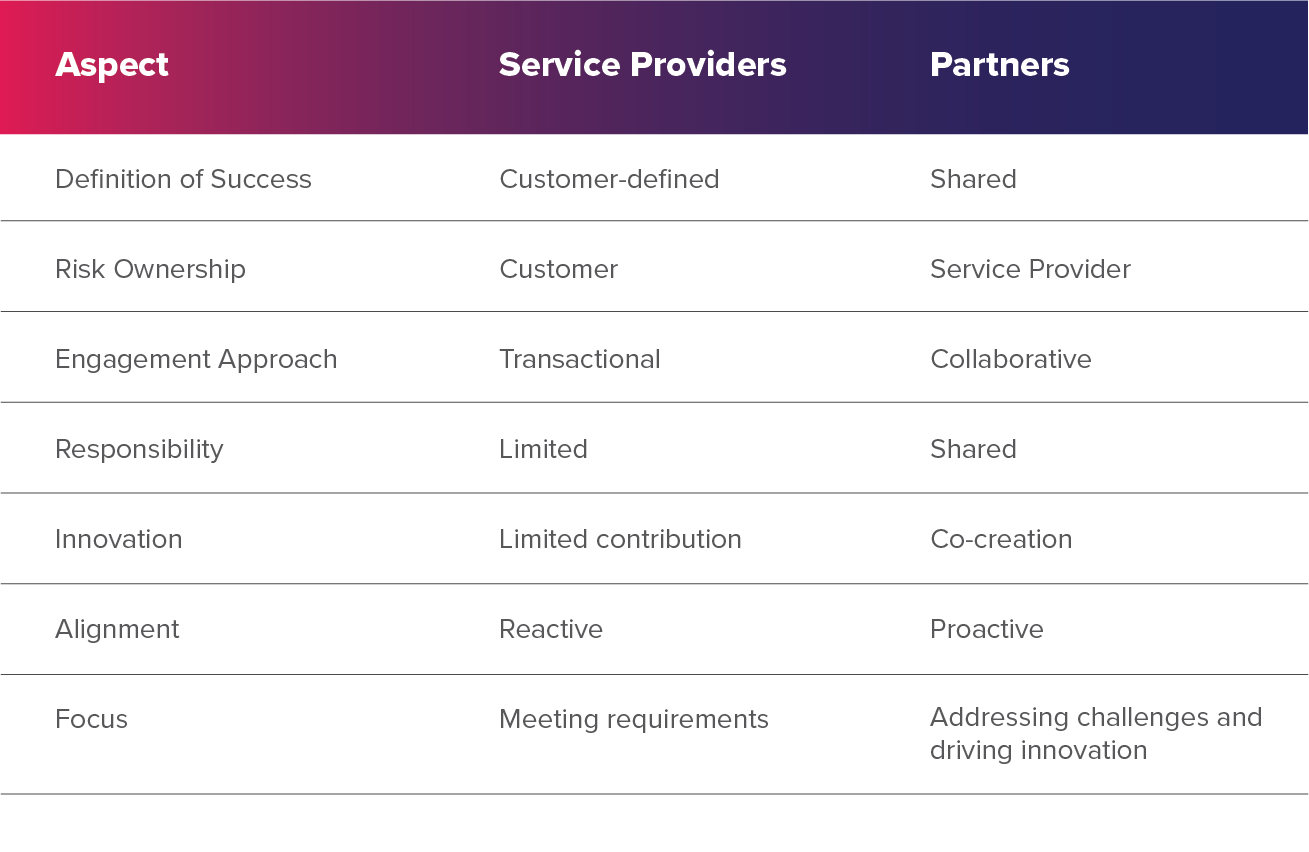
In other words, providers follow, partners lead. Providers sell through PowerPoints, whereas partners deliver through proof of concept.
Take our earlier example of Sutherland’s ZCCM program. We exemplify the true partner approach, assuming the risk associated with cloud migration and actively collaborating with our customers to ensure their success. By shifting from a service provider to a partner, we forge a value-driven relationship to achieve common goals.
So, how can you do the same?
Transitioning From Service Provider to Partner
- Adopt a partnership mindset, prioritizing your client’s success as your own
- Align your solutions with client objectives and challenges
- Foster transparent communication and actively listen to client needs
- Collaborate and co-create with clients for shared decision-making
- Take ownership of outcomes, demonstrating accountability
- Build trust-based relationships, delivering value beyond service agreements
- Evolve offerings based on feedback and market trends
DOM: In Summary
A digital operating model can empower your organization to navigate digital disruption, drive innovation, and deliver exceptional customer experiences. By leveraging technology and focusing on the 4Ps—People, Process, Platforms, and Partners—you can unlock the true potential of your digital journey.





